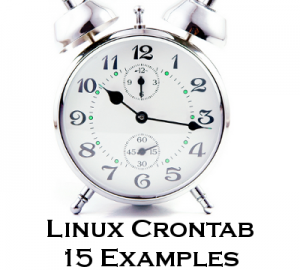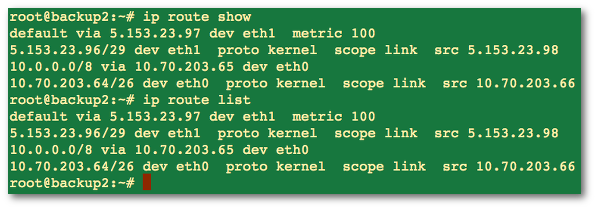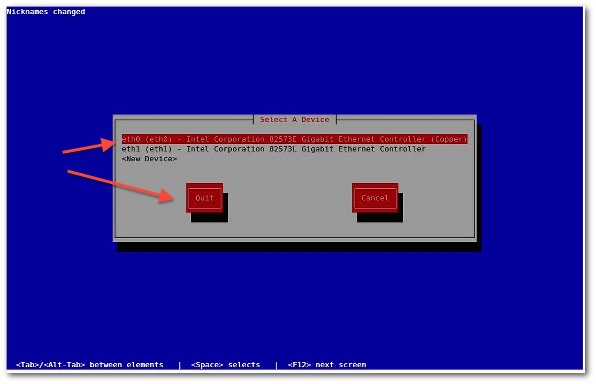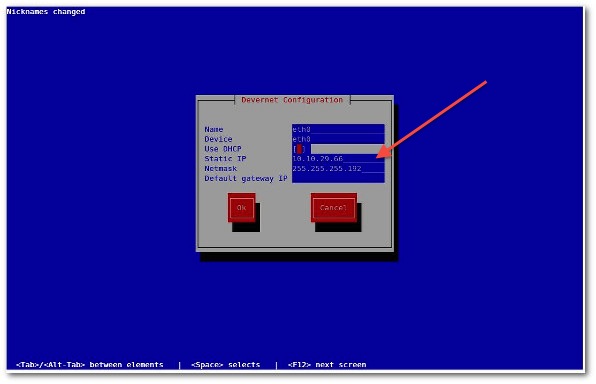
An experienced Linux sysadmin knows the importance of running the routine maintenance jobs in the background automatically.
Linux Cron utility is an effective way to schedule a routine background job at a specific time and/or day on an on-going basis.
Linux Crontab Format
MIN HOUR DOM MON DOW CMD
Table: Crontab Fields and Allowed Ranges (Linux Crontab Syntax)
| Field |
Description |
Allowed Value |
| MIN |
Minute field |
0 to 59 |
| HOUR |
Hour field |
0 to 23 |
| DOM |
Day of Month |
1-31 |
| MON |
Month field |
1-12 |
| DOW |
Day Of Week |
0-6 |
| CMD |
Command |
Any command to be executed. |
1. Scheduling a Job For a Specific Time
The basic usage of cron is to execute a job in a specific time as
shown below. This will execute the Full backup shell script
(full-backup) on
10th June 08:30 AM.
Please note that the time field uses 24 hours format. So, for 8 AM use 8, and for 8 PM use 20.
30 08 10 06 * /home/ramesh/full-backup
- 30 – 30th Minute
- 08 – 08 AM
- 10 – 10th Day
- 06 – 6th Month (June)
- * – Every day of the week
2. Schedule a Job For More Than One Instance (e.g. Twice a Day)
The following script take a incremental backup twice a day every day.
This example executes the specified incremental backup shell script
(incremental-backup) at 11:00 and 16:00 on every day. The comma
separated value in a field specifies that the command needs to be
executed in all the mentioned time.
00 11,16 * * * /home/ramesh/bin/incremental-backup
- 00 – 0th Minute (Top of the hour)
- 11,16 – 11 AM and 4 PM
- * – Every day
- * – Every month
- * – Every day of the week
3. Schedule a Job for Specific Range of Time (e.g. Only on Weekdays)
If you wanted a job to be scheduled for every hour with in a specific range of time then use the following.
Cron Job everyday during working hours
This example checks the status of the database everyday (including weekends) during the working hours 9 a.m – 6 p.m
00 09-18 * * * /home/ramesh/bin/check-db-status
- 00 – 0th Minute (Top of the hour)
- 09-18 – 9 am, 10 am,11 am, 12 am, 1 pm, 2 pm, 3 pm, 4 pm, 5 pm, 6 pm
- * – Every day
- * – Every month
- * – Every day of the week
Cron Job every weekday during working hours
This example checks the status of the database every weekday (i.e excluding Sat and Sun) during the working hours 9 a.m – 6 p.m.
00 09-18 * * 1-5 /home/ramesh/bin/check-db-status
- 00 – 0th Minute (Top of the hour)
- 09-18 – 9 am, 10 am,11 am, 12 am, 1 pm, 2 pm, 3 pm, 4 pm, 5 pm, 6 pm
- * – Every day
- * – Every month
- 1-5 -Mon, Tue, Wed, Thu and Fri (Every Weekday)
4. How to View Crontab Entries?
View Current Logged-In User’s Crontab entries
To view your crontab entries type crontab -l from your unix account as shown below.
ramesh@dev-db$ crontab -l
@yearly /home/ramesh/annual-maintenance
*/10 * * * * /home/ramesh/check-disk-space
[Note: This displays crontab of the current logged in user]
View Root Crontab entries
Login as root user (su – root) and do crontab -l as shown below.
root@dev-db# crontab -l
no crontab for root
Crontab HowTo: View Other Linux User’s Crontabs entries
To view crontab entries of other Linux users, login to root and use
-u {username} -l as shown below.
root@dev-db# crontab -u sathiya -l
@monthly /home/sathiya/monthly-backup
00 09-18 * * * /home/sathiya/check-db-status
5. How to Edit Crontab Entries?
Edit Current Logged-In User’s Crontab entries
To edit a crontab entries, use crontab -e as shown below. By default this will edit the current logged-in users crontab.
ramesh@dev-db$ crontab -e
@yearly /home/ramesh/centos/bin/annual-maintenance
*/10 * * * * /home/ramesh/debian/bin/check-disk-space
~
"/tmp/crontab.XXXXyjWkHw" 2L, 83C
[Note: This will open the crontab file in Vim editor for editing.
Please note cron created a temporary /tmp/crontab.XX... ]
When you save the above temporary file with :wq, it will save the
crontab and display the following message indicating the crontab is
successfully modified.
~
"crontab.XXXXyjWkHw" 2L, 83C written
crontab: installing new crontab
Edit Root Crontab entries
Login as root user (su – root) and do crontab -e as shown below.
root@dev-db# crontab -e
Edit Other Linux User’s Crontab File entries
To edit crontab entries of other Linux users, login to root and use
-u {username} -e as shown below.
root@dev-db# crontab -u sathiya -e
@monthly /home/sathiya/fedora/bin/monthly-backup
00 09-18 * * * /home/sathiya/ubuntu/bin/check-db-status
~
~
~
"/tmp/crontab.XXXXyjWkHw" 2L, 83C
6. Schedule a Job for Every Minute Using Cron.
Ideally you may not have a requirement to schedule a job every
minute. But understanding this example will will help you understand
the other examples mentioned below in this article.
* * * * * CMD
The * means all the possible unit — i.e every minute of every hour
through out the year. More than using this * directly, you will find it
very useful in the following cases.
- When you specify */5 in minute field means every 5 minutes.
- When you specify 0-10/2 in minute field mean every 2 minutes in the first 10 minute.
- Thus the above convention can be used for all the other 4 fields.
7. Schedule a Background Cron Job For Every 10 Minutes.
Use the following, if you want to check the disk space every 10 minutes.
*/10 * * * * /home/ramesh/check-disk-space
It executes the specified command check-disk-space every 10 minutes
through out the year. But you may have a requirement of executing the
command only during office hours or vice versa. The above examples shows
how to do those things.
Instead of specifying values in the 5 fields, we can specify it using a single keyword as mentioned below.
There are special cases in which instead of the above 5 fields you can
use @ followed by a keyword — such as reboot, midnight, yearly, hourly.
Table: Cron special keywords and its meaning
| Keyword |
Equivalent |
| @yearly |
0 0 1 1 * |
| @daily |
0 0 * * * |
| @hourly |
0 * * * * |
| @reboot |
Run at startup. |
8. Schedule a Job For First Minute of Every Year using @yearly
If you want a job to be executed on the first minute of every year, then you can use the
@yearly cron keyword as shown below.
This will execute the system annual maintenance using annual-maintenance shell script at 00:00 on Jan 1st for every year.
@yearly /home/ramesh/red-hat/bin/annual-maintenance
9. Schedule a Cron Job Beginning of Every Month using @monthly
It is as similar as the @yearly as above. But executes the command monthly once using
@monthly cron keyword.
This will execute the shell script tape-backup at 00:00 on 1st of every month.
@monthly /home/ramesh/suse/bin/tape-backup
10. Schedule a Background Job Every Day using @daily
Using the
@daily cron keyword, this will do a daily log file cleanup using cleanup-logs shell scriptat 00:00 on every day.
@daily /home/ramesh/arch-linux/bin/cleanup-logs "day started"
11. How to Execute a Linux Command After Every Reboot using @reboot?
Using the
@reboot cron keyword, this will execute the specified command once after the machine got booted every time.
@reboot CMD
12. How to Disable/Redirect the Crontab Mail Output using MAIL keyword?
By default crontab sends the job output to the user who scheduled the
job. If you want to redirect the output to a specific user, add or
update the MAIL variable in the crontab as shown below.
ramesh@dev-db$ crontab -l
MAIL="ramesh"
@yearly /home/ramesh/annual-maintenance
*/10 * * * * /home/ramesh/check-disk-space
[Note: Crontab of the current logged in user with MAIL variable]
If you wanted the mail not to be sent to anywhere, i.e to stop the
crontab output to be emailed, add or update the MAIL variable in the
crontab as shown below.
MAIL=""
13. How to Execute a Linux Cron Jobs Every Second Using Crontab.
You cannot schedule a every-second cronjob. Because in cron the
minimum unit you can specify is minute. In a typical scenario, there is
no reason for most of us to run any job every second in the system.
14. Specify PATH Variable in the Crontab
All the above examples we specified absolute path of the Linux command or the shell-script that needs to be executed.
For example, instead of specifying /home/ramesh/tape-backup, if you want
to just specify tape-backup, then add the path /home/ramesh to the PATH
variable in the crontab as shown below.
ramesh@dev-db$ crontab -l
PATH=/bin:/sbin:/usr/bin:/usr/sbin:/home/ramesh
@yearly annual-maintenance
*/10 * * * * check-disk-space
[Note: Crontab of the current logged in user with PATH variable]
15. Installing Crontab From a Cron File
Instead of directly editing the crontab file, you can also add all
the entries to a cron-file first. Once you have all thoese entries in
the file, you can upload or install them to the cron as shown below.
ramesh@dev-db$ crontab -l
no crontab for ramesh
$ cat cron-file.txt
@yearly /home/ramesh/annual-maintenance
*/10 * * * * /home/ramesh/check-disk-space
ramesh@dev-db$ crontab cron-file.txt
ramesh@dev-db$ crontab -l
@yearly /home/ramesh/annual-maintenance
*/10 * * * * /home/ramesh/check-disk-space
Note: This will install the cron-file.txt to your
crontab, which will also remove your old cron entries. So, please be
careful while uploading cron entries from a cron-file.txt.

































![sign-into-multiple-skype-accounts[4] sign-into-multiple-skype-accounts[4]](http://www.howtogeek.com/wp-content/uploads/2013/10/sign-into-multiple-skype-accounts4.png)





















